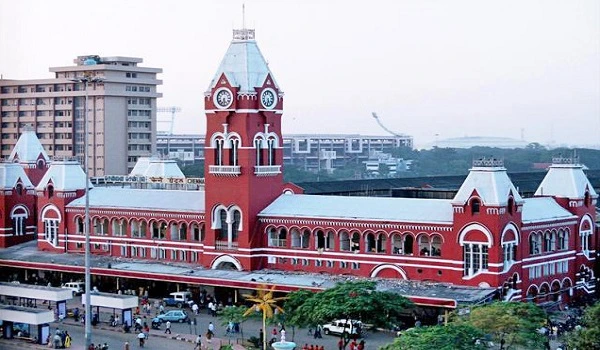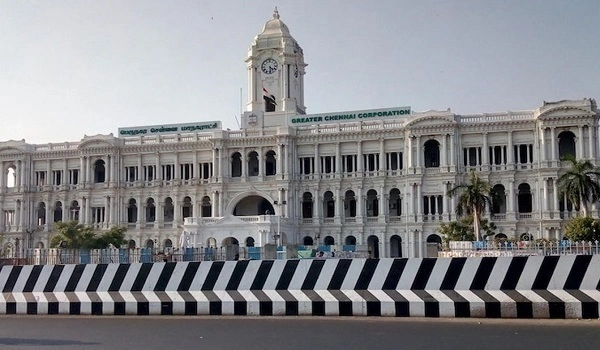Pallavaram Paleolithic Site: Where India's Stone Age Story Begins

The Pallavaram Paleolithic site in South Chennai is where the very first Stone Age tool in India was found. This happened way back on May 30, 1863, when a British geologist named Robert Bruce Foote picked up a hand axe from the ground. That simple stone tool changed the way we understand India's ancient past.
Who Was Robert Bruce Foote?Robert Bruce Foote worked for the Geological Survey of India. While checking a stone quarry near Zamin Pallavaram, he spotted a strange-looking rock. It was shaped and sharpened — clearly made by early humans. That tool was a hand axe from the Old Stone Age.
This discovery was huge. It showed that people had lived in India during the Paleolithic period, just like in Africa and Europe. Foote went on to find hundreds of other prehistoric sites across India. That's why he is called the Father of Indian Prehistory. Many of his tools, including the one from Pallavaram, are now kept at the Government Museum in Egmore, Chennai.
What Is the Madrasian Culture?The tools found at Pallavaram belong to what archaeologists call the Madrasian culture — a local form of the broader Acheulian culture seen across Africa and Asia.
Features of Madrasian Tools:- Material: Mostly made from quartzite, a strong stone found in the Pallavaram hills.
- Types: Hand axes, cleavers, chopping tools, and flakes.
- Purpose: These were likely used for cutting meat, chopping wood, or digging up plants.
Even though no bones of early humans have been found at the site, the tools tell us they lived here long ago — maybe as far back as 400,000 years.
Later Discoveries: Iron Age BurialsPallavaram's history doesn't stop with the Stone Age. In 1888, another archaeologist, Alexander Rea, found something different — Iron Age sarcophagi (large clay coffins). These were shaped like boxes with legs and used for burials about 2,300 years ago.
In 2017, the Archaeological Survey of India (ASI) uncovered another sarcophagus in the same area. This shows that people lived in Pallavaram for thousands of years — from the Old Stone Age to the Iron Age and beyond.
Can You Visit the Site?Not really. The exact place where Foote found the hand axe — the old parade ground — is now part of the town. Roads, homes, and buildings cover much of it. There's no open field or excavation you can walk through.
Where to See the Tools:If you want to see the actual hand axe and other tools from Pallavaram, visit the Government Museum, Egmore, Chennai. Their prehistory section has a large collection from Foote's work.
ASI Rules for Protected AreasUnder the AMASR Act (2010), any place near an important archaeological site has rules:
- 100 meters around the site: No new buildings allowed.
- 100–300 meters: You need special permission to build.
People living in Zamin Pallavaram often struggle to get home loans or build new houses due to these rules.
Urban PressureOver the years, quarrying and urban development have damaged the soil layers that held these ancient tools. That makes it harder for archaeologists to find more evidence or run new excavations.
Government Focus on HeritageIn March 2025, the Tamil Nadu government announced ₹7 crore for archaeology work across the state. Pallavaram isn't on the current list of sites for new digs, but the move shows the state still values its ancient heritage.
Modern communities like Prestige Pallavaram Gardens now rise in this same area — not far from where India's first Paleolithic tool was found. This shows the contrast between ancient history and today's fast-growing South Chennai. It also reminds us of the need to balance growth with protecting our past.
Why This Matters- For Students and Researchers: Pallavaram proves early humans lived in Tamil Nadu.
- For Locals: It's part of your own neighborhood's hidden story.
- For Urban Planners: Shows why it's important to follow laws protecting heritage sites.
- For History Lovers: A small tool from a dusty hill helped rewrite India's ancient story.
The Pallavaram Paleolithic site may look like just another part of the city today, but under its surface lies history that stretches back hundreds of thousands of years. The discovery made by Robert Bruce Foote in 1863 was not just about a stone — it was about understanding who we are and where we come from. Whether you're a student, a local, or someone just curious about the past, this site reminds us that great stories can begin in the most unexpected places.
Q1: Is the Pallavaram Paleolithic Site open to visitors?
No. The original site is now built over and not open to the public. To see tools from the site, visit the Government Museum in Egmore, Chennai.
Q2: Why is the Pallavaram site important in Indian history?Because it's where the first confirmed Stone Age tool in India was found. This discovery showed that early humans lived in this part of the world during the Paleolithic Age.
Q3: What kinds of tools were found at Pallavaram?Mainly hand axes, cleavers, and chopping tools made from quartzite. These were used for daily survival tasks like cutting meat or wood.
Q4: Are any new digs planned in 2025?Not in Pallavaram directly. But the Tamil Nadu government has allocated ₹7 crore for archaeological work at eight other sites in the state.
Prestige Group pre launch new project is Prestige Pallavaram Gardens
| Enquiry |








